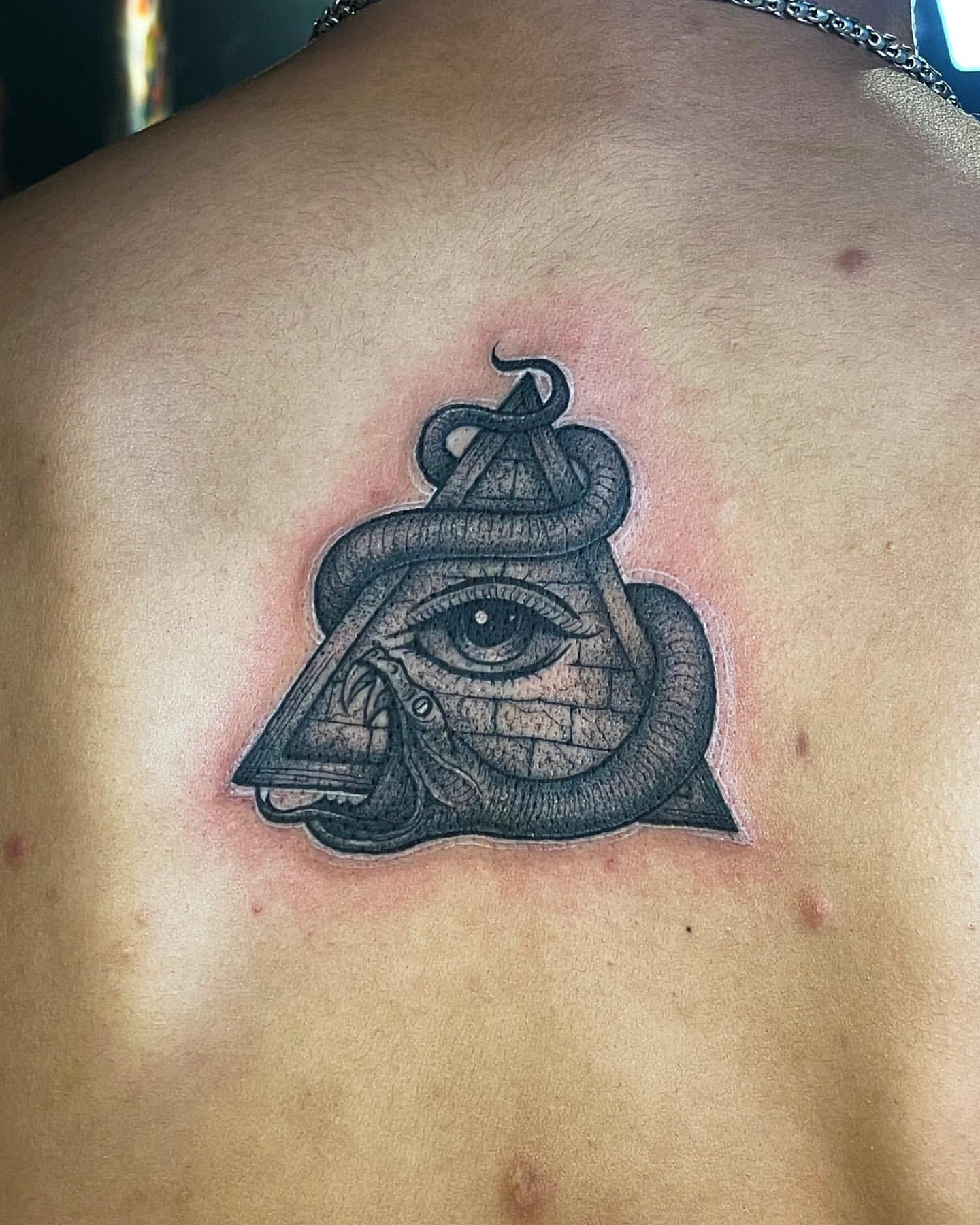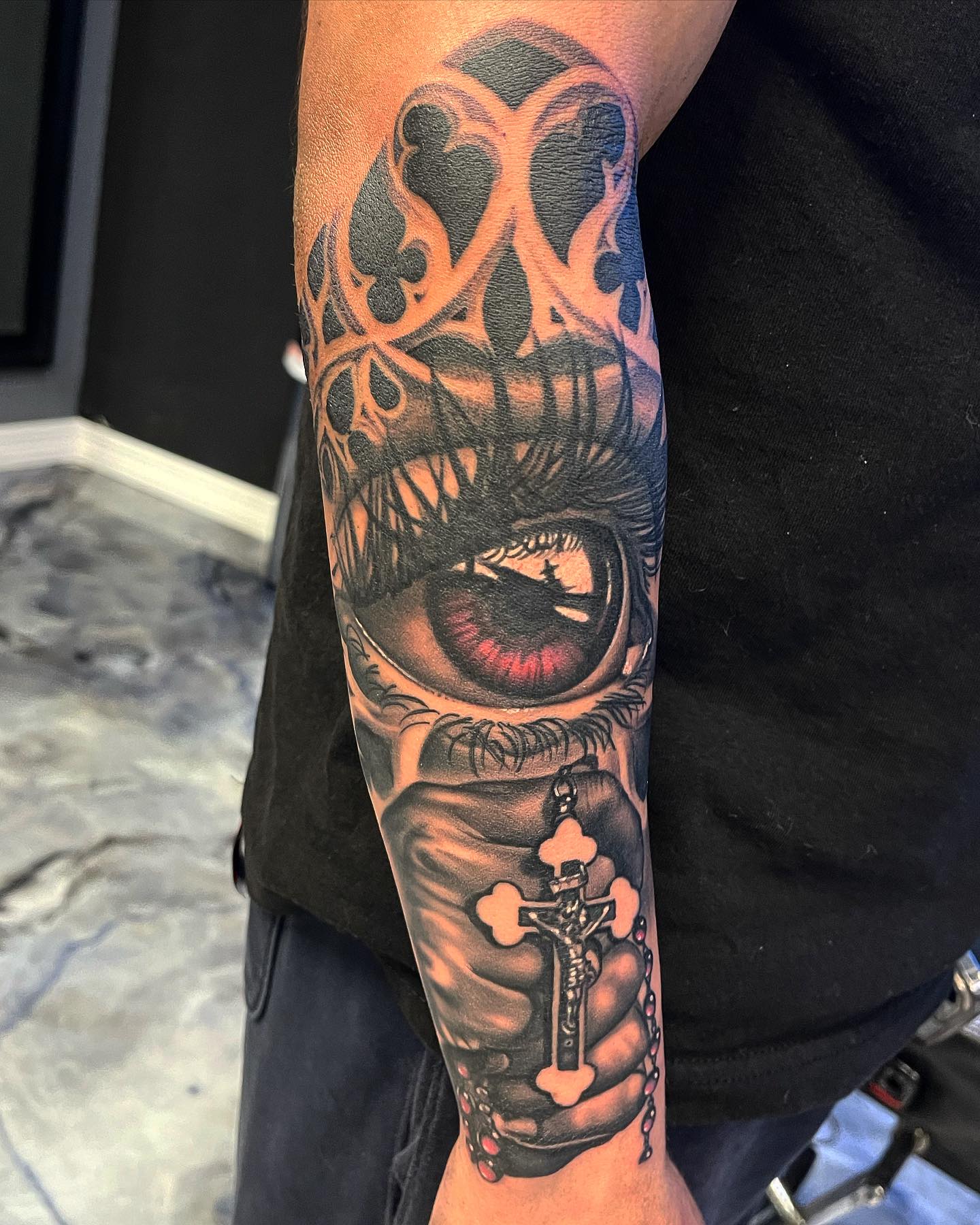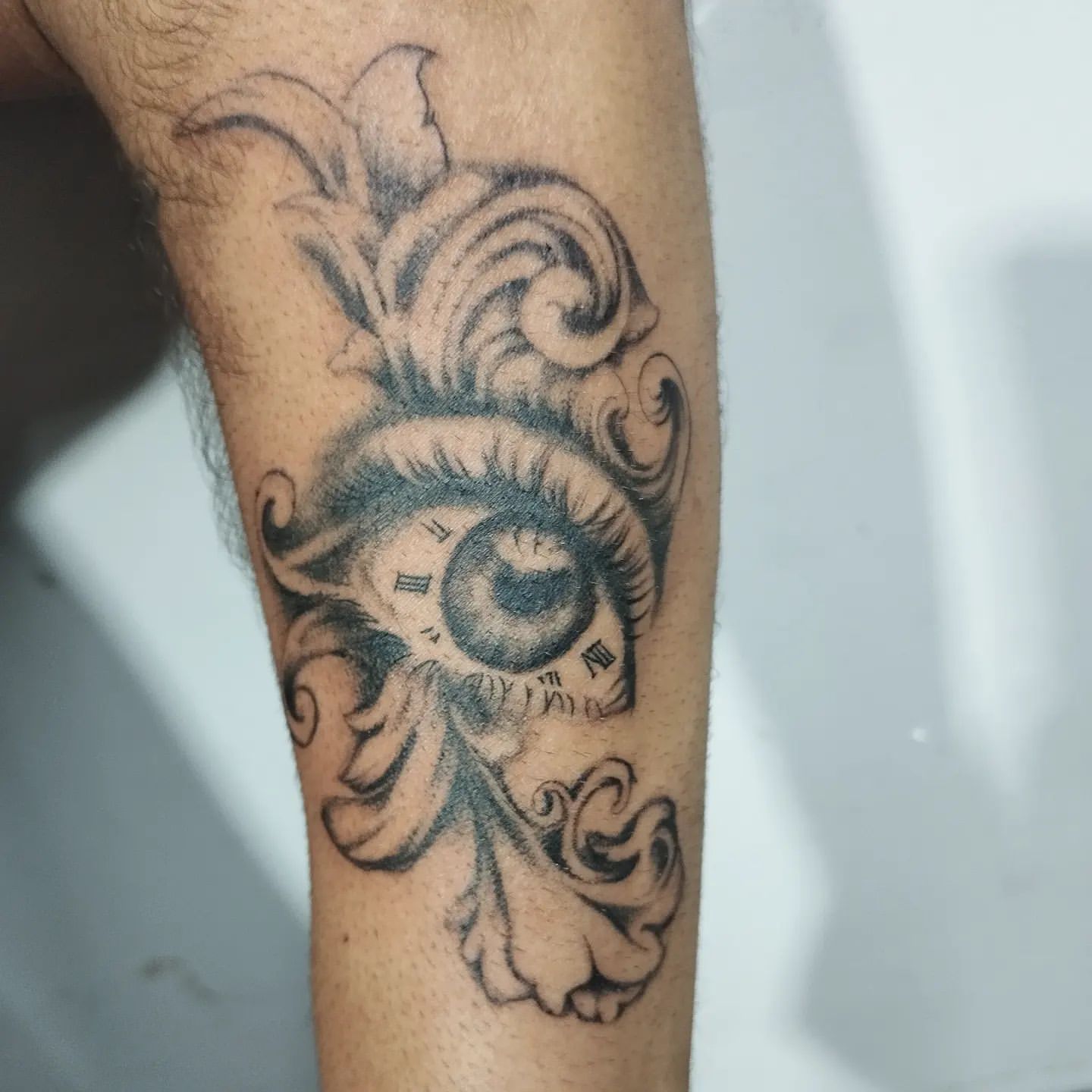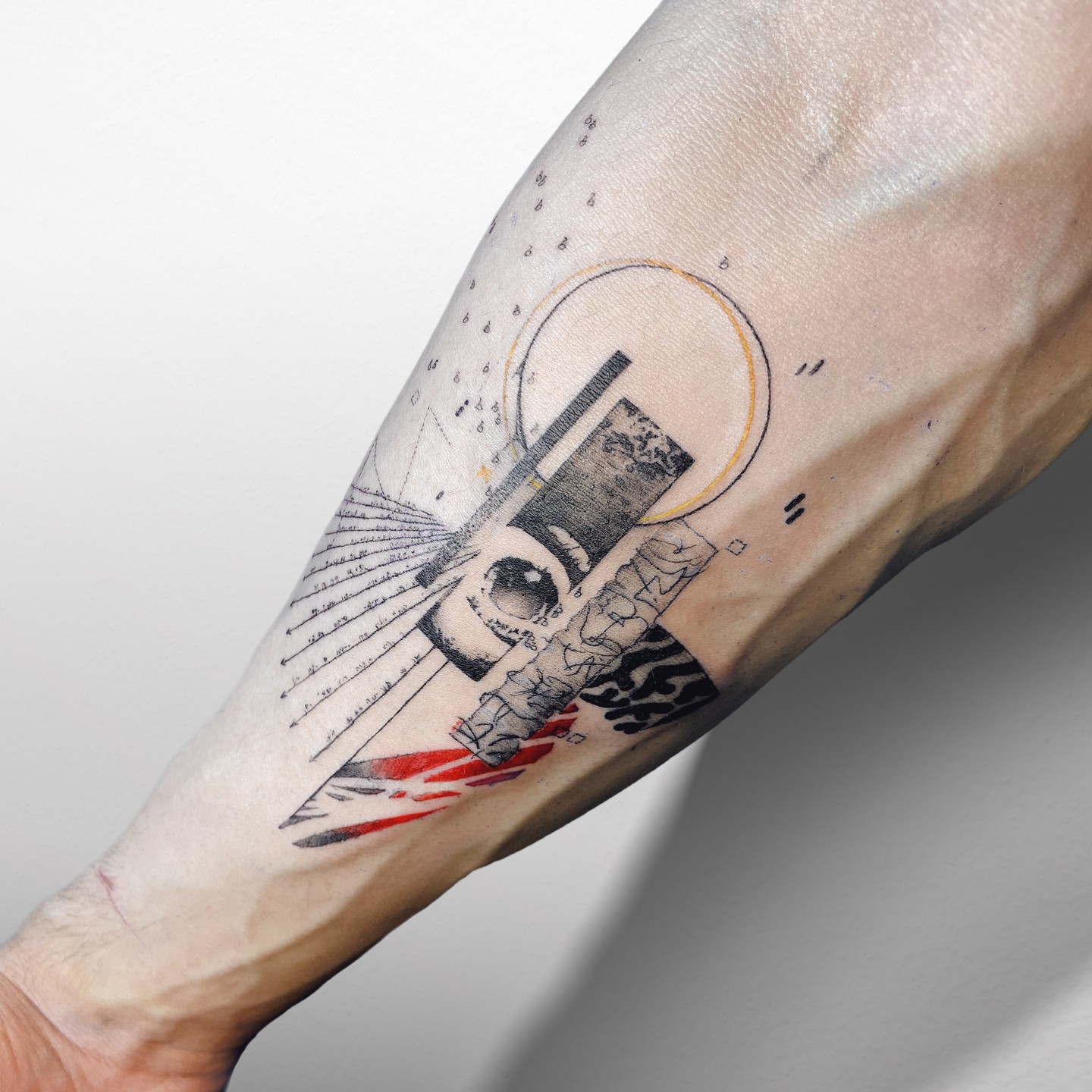Eye Tattoo

Imagine having a tiny work of art permanently inked on your eyelid. That’s exactly what eye tattoos offer – a unique way to express yourself and enhance your natural beauty. From delicate designs to bold and vibrant colors, eye tattoos are gaining popularity as a daring and captivating form of body art. However, it’s essential to understand the risks and considerations involved in getting an eye tattoo, as this delicate procedure requires a skilled and experienced artist. Discover the intricacies of this captivating trend and learn what you need to know before taking the plunge.
Beautiful Eye Tattoo Pics (Please Pin Your Favorite)
Eye tattoos, also known as ocular tattoos or eye ball tattoos, are a unique and highly controversial form of body modification. This article aims to provide a comprehensive guide to better understand eye tattoos, including their definition, origin, cultural significance, various types, procedures involved, risks and health concerns, legal and regulatory aspects, ink used, pain and aftercare, cultural implications, personal experiences, and attitudes towards eye tattoos.


















@perpetualartisticaink


#tattoo #polandtattoos #eyetattoo #tatuaz #tatuazepolska



Definition
An eye tattoo refers to the act of tattooing the eyeball or the area around the eye. It involves injecting pigments or dyes into the cornea, sclera, or surrounding tissues to create permanent, visually striking designs or colors. This procedure is considered extreme and irreversible, as it permanently alters the appearance of the eye.
Origin
The origins of eye tattoos can be traced back to ancient cultures. In ancient Egypt, eye tattoos were believed to have protective and spiritual meanings, serving as a form of amulet to ward off evil spirits. Additionally, some Native American tribes used eye tattoos to enhance their warrior status and intimidate their enemies.
Cultural Significance
Throughout history, eye tattoos have held cultural significance in various societies. In some cultures, eye tattoos symbolize spiritual enlightenment or the ability to see beyond the physical realm. Others perceive it as a form of self-expression, rebellion, or a way to belong to a specific subculture. However, it is important to note that the cultural significance of eye tattoos can vary greatly depending on the context and understanding within different communities.
Types of Eye Tattoos
Eye tattoos can manifest in different forms, each with its own unique characteristics and cultural associations.
Corneal or Scleral Tattoo
Corneal or scleral tattoos involve injecting ink into the clear, outermost layer of the eye (cornea) or the white of the eye (sclera). This type of eye tattoo often results in a change in eye color, creating a striking and unconventional appearance.
Eyeball Tattoo
Eyeball tattoos involve injecting pigments or dyes directly into the eyeball, usually resulting in a completely colored or patterned eyeball. This extreme form of eye tattooing is often chosen by individuals seeking a dramatic and attention-grabbing appearance.
Tattoo Under the Eye
Eye tattoos can also be created around the eye area, rather than on the eyeball itself. These tattoos may include designs under the eye, around the eye socket, or on the eyelids. This approach allows for more flexibility and creativity in the design, as it does not involve direct contact with the delicate tissues of the eye.
Tattoo of Eye Symbol
In addition to actual eye tattoos, some people may opt for tattoos depicting eyes as symbols. These eye symbols can represent various meanings, such as protection, awareness, or spirituality. They are often placed on other parts of the body, such as the forearm or chest.
Procedure for Eye Tattoos
The process of getting an eye tattoo typically involves several steps, including an initial consultation, design and placement, and the actual procedure.
Initial Consultation
Before undergoing an eye tattoo, it is crucial to consult with a professional tattoo artist or a qualified ophthalmologist. This consultation serves as an opportunity to discuss the individual’s desires, assess their eye health, determine their eligibility for the procedure, and address any concerns or questions they may have. It is essential to choose a reputable and experienced professional who specializes in eye tattoos to ensure safety and proper execution.
Design and Placement
Once the initial consultation is complete, the design and placement of the eye tattoo are discussed. The individual can provide input on their desired design, color, and location of the tattoo. The tattoo artist or ophthalmologist will provide guidance based on their expertise and the individual’s eye anatomy, ensuring a design that complements the natural shape and features of the eye.
Scleral Tattoo Procedure
For scleral tattoos, the procedure begins with topical anesthesia to numb the eye surface. The tattoo artist then uses specialized tattooing needles to inject the ink into the white of the eye, creating the desired design or color. It is essential for the individual to keep their eye open and fixed in a specific position during the procedure to ensure accuracy and minimize the risk of complications.
Corneal Tattoo Procedure
Corneal tattoos are a more intricate procedure and require a skilled professional. Typically, a corneal tattoo involves removing a thin layer of the cornea’s surface, followed by the application of pigmented ink. The tattoo artist carefully places the ink into the corneal layer, creating the desired design or color. This procedure requires extreme precision and should only be performed by a trained ophthalmologist.
Risks and Health Concerns
As with any invasive procedure, eye tattoos carry certain risks and health concerns. It is crucial for individuals considering this type of body modification to be aware of these potential dangers before making a decision.
Immediate Risks
The immediate risks associated with eye tattoos include severe pain, infection, corneal ulcers, corneal scarring, vision loss, and even blindness. The delicate nature of the eye and the invasive nature of the procedure make these risks ever-present. Inadequate sterilization, poor technique, or improper use of equipment can significantly increase the likelihood of adverse effects.
Long-Term Health Concerns
Eye tattoos can also have long-term health implications. The injected pigments may migrate within the eye over time, causing blurry vision, distortion, or changes in color perception. Additionally, certain pigments used in eye tattoos may contain toxic substances or heavy metals, posing a risk for chronic eye inflammation and systemic toxicity.
Medical Opinion
The medical community remains divided on the safety and ethics of eye tattoos. While some ophthalmologists may perform eye tattoos under specific circumstances, many professionals strongly discourage this procedure due to the substantial risks involved. The delicate nature of the eye and the potential for irreversible damage make it imperative to prioritize eye health over cosmetic modifications.
Alternatives to Eye Tattoos
For those seeking a unique and striking appearance without undergoing eye tattoos, there are alternative options available. Colored contact lenses, various makeup techniques, or even temporary tattoos can provide a similar aesthetic effect without the risks associated with permanent eye modifications.
Legal and Regulatory Aspects
The legality and regulatory framework surrounding eye tattoos vary significantly from country to country. It is important to understand the legal status and regulations in one’s jurisdiction before considering this procedure.
Legal Status in Different Countries
In some countries, eye tattoos are banned outright due to health and safety concerns. In others, there may be no specific legislation addressing eye tattoos, leaving the legality uncertain. It is essential to research and consult legal experts to ensure compliance with local laws and regulations.
Regulations Around Eye Tattoos
In countries where eye tattoos are legal, there may still be specific regulations in place to ensure the safety of individuals undergoing the procedure. These regulations often focus on the qualifications and training of the professionals performing eye tattoos, as well as specific health and safety standards that must be adhered to.
Professional Guidelines
Various professional organizations and governing bodies provide guidelines for tattoo artists, ophthalmologists, and other professionals involved in eye tattoo procedures. These guidelines emphasize the importance of proper training, sterilization techniques, and informed consent to minimize the risks associated with eye tattoos.
Ink Used for Eye Tattoos
The choice of ink plays a critical role in eye tattoos, as it directly impacts the safety and longevity of the tattoo.
Types
There are different types of ink used for eye tattoos, including both standard tattoo inks and specialized inks specifically formulated for eye use. Specialized inks for ocular tattoos are often more liquid and less viscous than traditional tattoo inks, allowing for better flow during the procedure.
Safety and Quality
Ensuring the safety and quality of the ink used in eye tattoos is of utmost importance. Reputable tattoo artists and ophthalmologists use high-quality inks that are free from toxic substances or heavy metals, as these can cause adverse reactions or long-term health issues. Adequate sterilization procedures must also be followed to minimize the risk of infection.
Reaction with Body
The way the body reacts to the ink used in eye tattoos can vary between individuals. Some people may experience allergic reactions, infections, or other complications due to the presence of foreign substances in the eye. It is crucial for individuals to closely monitor their eyes and seek immediate medical attention if any adverse symptoms or changes occur.
Pain and Aftercare
Eye tattoos are generally considered to be one of the most painful forms of body modification due to the sensitivity of the eye. Proper aftercare is vital to ensure healing and minimize the risk of complications.
Pain During and After Procedure
The pain experienced during an eye tattoo procedure can be intense and prolonged. Individuals may experience significant discomfort, stinging sensations, or even temporary loss of vision. After the procedure, the eye is likely to be sore and sensitive for several weeks, with possible redness, swelling, and blurry vision.
Immediate Aftercare
After getting an eye tattoo, proper aftercare is crucial for promoting healing and reducing the risk of infection or complications. This typically involves the use of prescribed eye drops, antibiotic ointments, and regular follow-up visits with the designated professional. It is important to strictly adhere to the aftercare instructions provided to minimize the risk of adverse effects.
Long-Term Care
Eye tattoos require long-term care and vigilance to maintain eye health. Regular eye exams, monitoring for changes in vision, and promptly seeking medical attention if any complications arise are essential steps in ensuring the well-being of the eyes following an eye tattoo procedure.
Cultural Implications of Eye Tattoos
Eye tattoos have both positive and negative cultural implications, with their reception varying across different communities and subcultures.
In Mainstream Culture
In mainstream culture, eye tattoos are often viewed as extreme and taboo. Many individuals find them unsettling or disturbing due to the potential health risks and irreversible nature of the procedure. Eye tattoos can elicit strong reactions, ranging from awe and fascination to judgment and fear.
In Subcultures
Eye tattoos hold significant cultural significance within certain subcultures. These subcultures embrace extreme forms of self-expression, body modification, or alternative aesthetics. Eye tattoos may be viewed as a symbol of rebellion, artistic expression, or a way to belong to a particular group. However, it is crucial to approach these subcultures with respect, as the perception and significance of eye tattoos may vary within each community.
Cultural Appropriation Issues
Eye tattoos have faced accusations of cultural appropriation, particularly when individuals from outside of specific cultures choose to adopt eye tattoos rooted in cultural symbolism or significance without fully understanding or respecting their origins. It is essential to approach eye tattoos with cultural sensitivity and awareness, recognizing and honoring the cultural heritage and significance they may hold.
Personal Experiences with Eye Tattoos
Personal experiences with eye tattoos can vary greatly from person to person, influencing their perceptions, social interactions, and level of satisfaction.
First-Hand Accounts
Individuals who have undergone eye tattoo procedures often share personal accounts of their experiences. These accounts can provide insights into the motivations behind their decision, the challenges faced during the procedure, the recovery process, and the long-term impact on their lives. Reading firsthand accounts can offer valuable perspectives for those considering eye tattoos.
Social Implications
Eye tattoos can have profound social implications, as they often draw attention and elicit strong reactions from others. Individuals with eye tattoos may face heightened scrutiny, prejudice, or discrimination due to their unconventional appearance. Social acceptance and support networks play a crucial role in the well-being and social integration of individuals with eye tattoos.
Regrets and Satisfaction
While some individuals with eye tattoos express satisfaction and pride in their chosen modification, others may experience regrets or dissatisfaction. The permanence of eye tattoos means that any dissatisfaction or change of heart cannot be easily reversed. It is essential for individuals to carefully consider their motivations, potential impacts, and long-term expectations before deciding to undergo an eye tattoo.
Attitudes Towards Eye Tattoos
Public opinion and attitudes towards eye tattoos can vary widely based on cultural norms, personal beliefs, and general perceptions of body modification.
Public Opinion
Public opinion on eye tattoos is often divided. Some individuals find eye tattoos intriguing and awe-inspiring, appreciating the dedication and artistry involved. Others may view them with discomfort or even revulsion, concerned about the potential health risks and societal implications. Public opinion tends to be heavily influenced by personal values, cultural background, and exposure to alternative aesthetics.
Acceptance in Professional Environments
Eye tattoos are generally not widely accepted in professional environments. Many employers, particularly those in more traditional industries, may perceive eye tattoos as unprofessional or inappropriate. This perception can pose challenges for individuals with eye tattoos, limiting their job prospects or requiring them to cover or hide their tattoos during work hours.
Changing Perceptions over Time
Perceptions towards eye tattoos have evolved over time, reflecting changing societal norms and increasing acceptance of various forms of body modification. As alternative aesthetics gain more recognition and understanding, eye tattoos may gradually become more accepted and normalized. However, it is important to consider that cultural attitudes towards eye tattoos can vary significantly across different regions and communities.
In conclusion, eye tattoos are a unique and highly controversial form of body modification. While they hold cultural significance and offer a striking aesthetic appeal, eye tattoos come with various risks, health concerns, and legal considerations. Understanding the intricate procedures involved, potential health implications, and personal experiences of individuals with eye tattoos is crucial before making a decision. Eye tattoos are not widely accepted in mainstream culture or professional environments, and their reception varies across different subcultures. Ultimately, attitudes towards eye tattoos are subject to individual beliefs, societal norms, and changing perceptions over time.


